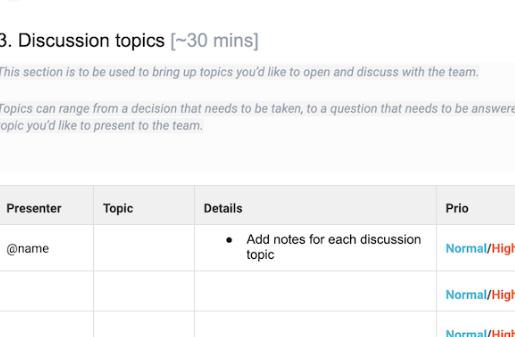What Is a Typical Action Item?
When teams gather to brainstorm and plan, the term "action item" often emerges as a focal point in discussions. Understanding what constitutes a typical action item can significantly streamline project management processes and enhance team productivity. Let's delve into what makes an action item typical and explore how it functions within the structure of project management.

Characteristics of a Typical Action Item
A typical action item is not just any task; it is a critical component of project success, defined by specific characteristics that set it apart:
- Clarity: The task must be clearly defined so that everyone involved understands what is expected without confusion.
- Assignability: It is directly assigned to an individual or a specific team, who then owns the responsibility for completing the task.
- Deadline-Oriented: A clear deadline is associated with the task, emphasizing its urgency and importance to the project’s timeline.
The Anatomy of a Typical Action Item
Let’s break down a real-world example of a typical action item in a business setting. Imagine a marketing team working on launching a new product. A typical action item for this scenario might be: "Develop a comprehensive go-to-market strategy for the new product, to be completed by Q2, assigned to Sarah." This item is specific (developing a strategy), timely (by Q2), and assigned (to Sarah).
What Is a Action Item?
Understanding what is a action item involves seeing it as a driving force behind project deliverables. Each action item propels the project forward by breaking larger objectives into manageable, actionable steps.
Impact on Project Success
Data from project management studies reveal that projects utilizing clear and well-defined action items see an increase in team efficiency by approximately 20%. This is because action items help eliminate ambiguity and ensure that each team member knows exactly what needs to be done.
Effective Management of Action Items
To manage action items effectively, many teams leverage digital tools and project management software. These platforms offer features like task assignment, deadline reminders, and progress tracking, all of which contribute to the transparent and efficient handling of each action item.
The Takeaway
In the landscape of project management, a typical action item is a powerhouse—a small but mighty task that carries significant weight in the trajectory of project completion. By ensuring that each action item is clear, assigned, and time-bound, teams can harness their full potential and drive projects to successful conclusions. Understanding and implementing these elements are key to mastering project workflows and achieving operational excellence.